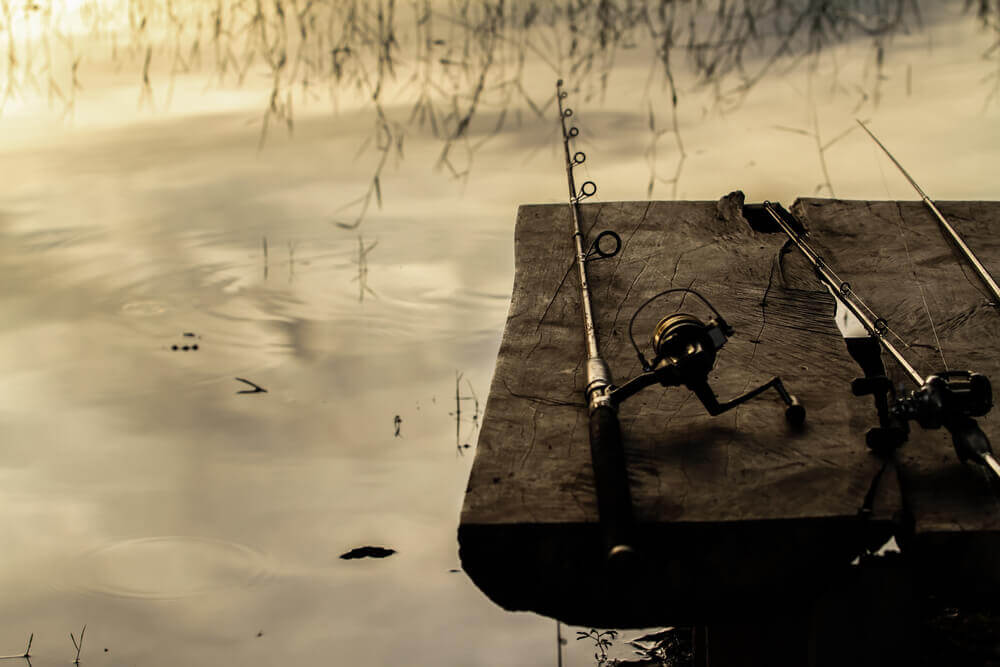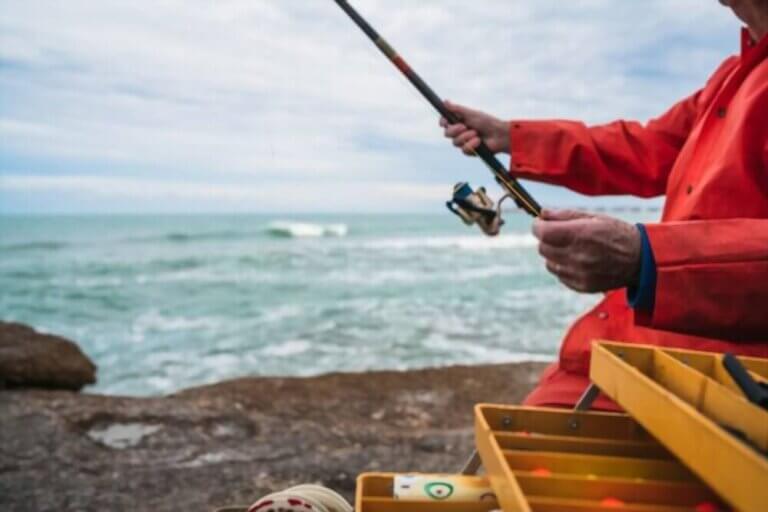How To Set Up A Fishing Pole For Bass
How many times have you gone fishing and only managed to land half of the fish you hooked? What if you had a feeling it was a bite but weren’t sure? On each outing, how many bites do you miss? Do you have the ability to make precise throws with your rod?
It is crucial to learn which rigs work best for a specific area and conditions. It is vital if you want to learn how to fish, whether you’re working on a beginner’s fishing pole set up or setting up a fishing rod for lake fishing.
Each sort of rig has a distinct purpose, and some rigs go by multiple different names. Bass rigs, flounder rigs, and catfish rigs are examples of rigs that work well for certain species.
Either you’re attempting to learn how to set up a fishing pole for Bass because you need one. Or, you could wish to learn how to put up a fishing pole with a bobber, which aids in creating an exciting bait.
Do you find the process of setting up and learning how to use your spinning rod and reel to be tedious? If that’s the case, don’t be concerned!
The Different Types of Fishing Poles and Rods
Because you enjoy fishing, you’ll also require excellent fishing poles. As a result, you can get the most out of your fishing experience.
There are numerous sorts of fishing poles available for you to choose from it:
- The fishing pole that spins
- Casting pole that spins
- Pole for fly fishing
- Trolling pole with a slow speed
Every fishing pole has its own set of characteristics and functions. It will significantly improve your fishing experience.
A good fishing rod will help you become a better angler. Unfortunately, many anglers are unaware that one of the most critical tools for capturing and landing Bass is the fishing rod. Therefore, the finest lures for you will differ depending on where you live and what season it is. However, there are a few other sorts of lures that commonly use to catch Bass:
Choosing a Lure
The choice of lure is the first step in choosing the best bass fishing rod. Although a hammer used to drive a screw, is it the most effective tool? Fishing with crankbaits with a flipping rod would be just as challenging.
While a flipping rod use to cast a crankbait, the distance, accuracy, and ability to land bass can compromise. The first step in picking the right rod for the job is understanding the different rod sections and how they affect casting and fighting a bass.
Crankbaits
Crankbaits are a cast-and-retrieve lure that can help you cover a lot of water quickly while looking for aggressive fish.
Many others, on the other hand, make the mistake of casting and reeling straight back. While this method can catch some fish, crankbaits are most effective when the angler changes the speed of his or her retrieve.
Soft-plastics
It’s safe to assume that soft-plastic baits have caught more fish than any other sort of bait. Natural feed is well-imitated with plastic worms, tubes, and creature baits. But, first, a texas-rigged plastic worm, which is nearly weedless and snag-resistant, is an excellent technique to fish blown over trees, rocks, and foliage.
Topwater
While topwater doesn’t always catch the most fish, they create some of the most dramatic and memorable fish strikes! Topwater baits such as poppers and frogs are a thrill to use, and they frequently attract the most extensive and meanest Bass on the water.
On key lake points, behind standing timber, and along riprap banks, poppers and other topwater hard baits work well.
Things To Need For Setting Up Fishing Pole
Regardless, a single object cannot set up a fishing pole. As a result, you’ll need some fishing tools before you start making your fishing pole.
Fishing line cord
A fishing line cord is a thin, long-lasting thread or string used for fishing, which you will tie to the fishing pole and use to catch a single fish at a time.
A spinning fishing rod
Spinning rods use to attract and capture fish. It is home to a variety of fish species.
A spinning reel with a fused spool
A spinning reel, like a spinning fishing rod, is crucial for catching fish. Therefore, it will be beneficial to both novice and seasoned anglers.
Scissors or cutlery
To cut or trim the fishing line, you can use any cutters or scissors. At the same time, you’re putting your fishing rod together on your own. A standard scissor can suffice as well.
Artificial lures and gear
Some newcomers are unsure about how to set up a fishing pole to employ bait. To entice fish, you’ll need spinning fishing gear to hook up or connect your tempting flies.
Methods for setting up a fishing pole for Bass
1.Clean or Wash Your Fishing Rod
The first step is to clean or wash your fishing rod because hygiene is essential for accomplishing any work.
You may wipe the pole clean with a clean cloth to get clogged up with oil or dust. You could also think about cleaning other parts and materials. As if all of the components aren’t thoroughly clean. It impacts the way you set up your fishing pole. For example, it’s possible parts aren’t correctly aligned during installation. As a result, it will have an impact on your fishing.
2.Put the poles/rods together
The fishing rod you bought makes of multiple pieces. You may need to put those pieces together to repair your top choice fishing rod as a whole.
Connect the ends of one component to the ends of another, and it will construct. You can also use the manufacturing book that came with the rod to connect the parts according to the instructions. All of the pieces must have a ferrule metal cap on them, which will allow you to pin them together.
3.Screw-Set a Fused Spinning Reel by Loosening the Reel Seat
To begin, loosen the rear seat screw a little on the pole. It’s just above the handle. After you’ve loosened it up. It will be sufficient in terms of space. It’s now time to attach the spinning reel to that spot. It is also necessary while learning how to set up a fishing pole for saltwater fishing.
4.Install the Spinning Reel in the Loosened Reel Seat
After you’ve removed the reel seat from the pole and made enough room for a spinning reel to set up. After that, put the spinning reel together, followed by the open seat and fishing pole.
Also, when you’re installing the reel and tightening the reel seat, make sure it’s secure and not swaying. However, you must be careful not to over-strengthen it. Because of the pressure, it may break.
5.Set it whether you’re a righty or a lefty
Suppose you prefer to type with your left or right hand. First, you should set up the spinning reel and fishing pole in a way that allows you to use them more comfortably.
You can always move your spinning reel to the side to make it easier to manage. However, you must modify the position of the reel after it sets in the reel seat. If you’re a righty, you’ll put it on the left side. Alternatively, if you’re a lefty, you’ll switch it to the right.
Basic Hooks & Lures to Include
If you wish to use live bait, use a worm hook
Thread the line through the ceramic guides on the fishing pole after releasing the drag on the reel. Use a Palomar knot to protect the hook to the line.
For a bass fishing lure rig, set up a Texas rig. First, attach a cone-shaped weight to the line, with the point facing the end. Next, attach a worm hook and a rubber worm, making sure the hook’s point is hidden.
When Bass are wary, use a Carolina rig
Install a 3–4 oz. or egg weight first, then a swivel. Next, use a Palomar knot to secure an offset worm hook, then put any rubber bait onto the hook.
To reach the Bass near the bottom, set up a drop-shot setup
To leave a tag end, double the line before passing it through the eye of a worm hook. Pass the tag end through the eye after tying a Palomar knot on the hook. Attach a weight to the tag line’s end and a rubber worm or other lure to the hook.
Frequently Asked Questions
Conclusion
If you’re new to bass fishing, you’re undoubtedly overwhelmed by the variety of rod and reel models available. However, as your confidence in your abilities grows and your bass fishing style develops, go out and test new lines and brands.
Then, if you catch more fish while losing fewer lures, you’re on the right track. To make matters worse, you must choose between three different fishing rods: casting, spin casting, or spinning rod setup.
Whether you’re making Sabiki Rigs, catfish rigs, trout rigs, or any other rig, make sure you attach all of your terminal tackle tightly, so the rig doesn’t come loose when you’re fishing.
Spinning rod setups are significantly easier to master than casting rod setups, making them an excellent choice for novices. They’re also more suited to lightweight and finesse applications, which is why even seasoned bass fisherman choose to use them.







